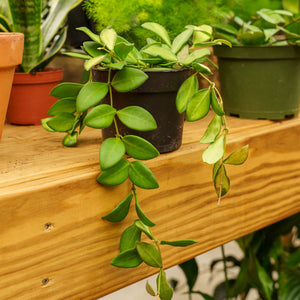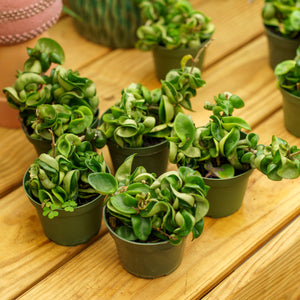The Hoya Guide
Hoya, often referred to as wax plants, are a diverse group of tropical vines and epiphytes beloved for their glossy foliage, fragrant flowers, and long lifespan. With many varieties adaptable to indoor environments, hoyas have become a staple in houseplant collections. Their ability to trail, climb, or cascade makes them ideal for hanging baskets, trellised containers, or shelves where their foliage and blooms can be fully appreciated.
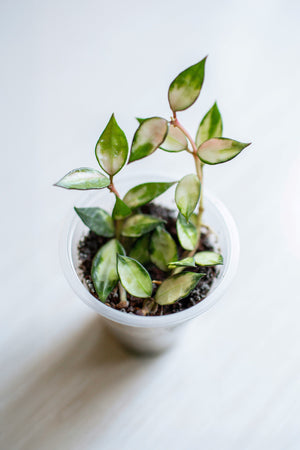
About
Hoya belongs to the Apocynaceae family and originates from tropical Asia and Australia. Most are epiphytic, meaning they grow on other plants or surfaces in the wild, absorbing moisture and nutrients from the air and rain. The plants are known for their thick, waxy leaves and star-shaped flowers, often arranged in fragrant clusters.
Among the most well-known varieties is Hoya carnosa, a classic species with fleshy green leaves and pink, porcelain-like flowers. 'Compacta', often called Hindu rope hoya, adds a sculptural element with its tightly curled foliage. Hoya kerrii, the sweetheart hoya, is a popular Valentine’s Day gift due to its heart-shaped leaves. Variegated selections like Hoya Australis 'Lisa' bring color as well as form to plant collections, while Hoya curtisii and Hoya krohniana 'Eskimo' offer delicate, silver-splashed leaves ideal for smaller spaces.
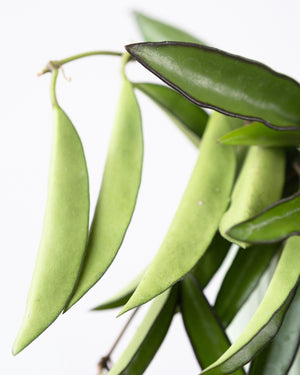
PLANTING
While hoyas are most commonly grown indoors, their care is simple and their requirements are easy to meet:
- USDA Hardiness Zones: Outdoors, hardy only in Zones 10–12. In most regions, hoyas are grown as indoor plants.
- Soil: Use a light, well-draining mix—typically a blend of potting soil, orchid bark, and perlite. Good aeration is key.
- Sunlight: Bright, indirect light is best. Variegated and flowering types, such as Hoya pubicalyx 'Splash', may need more light to retain leaf markings and bloom well.
- Containers: Choose pots with excellent drainage. Hoyas prefer to be slightly root-bound and do well in hanging baskets or climbing containers.
- Humidity: Moderate to high humidity promotes healthy growth and flowering. Mist or use a pebble tray in drier climates.
Repot only when absolutely necessary, as many hoyas bloom best when slightly pot-bound.
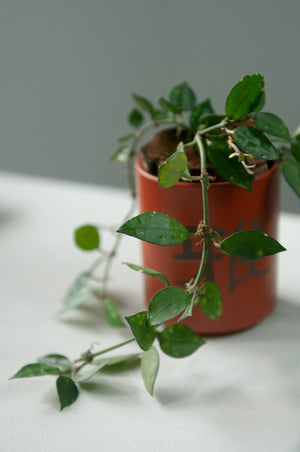
CARE
Hoyas are low-maintenance and forgiving, making them ideal for both novice and experienced plant enthusiasts:
- Watering: Allow the soil to dry out partially between waterings. Thicker-leaved types like Hoya carnosa and Hoya kerrii are more drought-tolerant.
- Fertilizing: Feed monthly during spring and summer with a diluted balanced or high-phosphorus fertilizer to support blooms.
- Pruning: Prune lightly to control size or shape. Avoid removing flower spurs—blooms reappear from the same sites year after year.
- Support: Provide a small trellis or moss pole for climbing varieties, or allow trailing types to cascade naturally.
- Cleaning: Wipe leaves occasionally to remove dust and enhance photosynthesis.
Flowering may take time, especially in younger plants, but mature hoyas reward patience with fragrant, showy blooms.
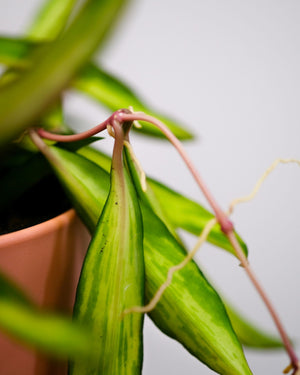
HOW TO USE
Hoyas are prized for their ornamental value and flexibility in a variety of indoor settings:
- Hanging Displays: Showcase trailing types like Hoya wayetii or Hoya sp. aff. burtoniae in macrame or wall-mounted pots.
- Climbing Frames: Train varieties like Hoya pubicalyx or Hoya Australis 'Lisa' on small trellises for upright impact.
- Mixed Houseplant Arrangements: Pair with pothos, peperomia, or ferns for contrasting texture and growth habit.
- Bright Bathrooms or Kitchens: Make use of humidity and filtered light for optimal health.
Hoyas are excellent companions for modern, minimalist, or tropical interior designs, adding a touch of green luxury without high demands.
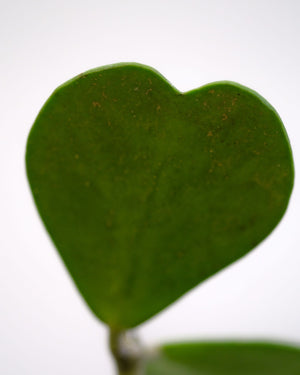
COMMON QUESTIONS
- How to propagate a Hoya plant? Take stem cuttings with at least one node and leaf, then root in water or moist potting mix. Provide warmth and humidity for best results.
- How to care for a Hoya plant? Provide bright, indirect light, water when soil is partially dry, and feed lightly in the growing season.
- Are Hoya toxic to dogs? Hoyas are generally considered non-toxic to dogs but may cause mild digestive upset if large amounts are ingested.
- Are Hoya toxic to cats? Hoyas are non-toxic to cats, though chewing on foliage can still lead to minor irritation.
- How to get a Hoya plant to bloom? Ensure the plant is mature, provide ample bright light, and allow it to stay slightly root-bound. Avoid moving it frequently.
- What is a Hoya plant? Hoyas are tropical, mostly epiphytic plants with waxy leaves and star-shaped flowers, often grown as indoor houseplants.
- How to grow a Hoya? Use well-draining soil, provide indirect sunlight, maintain moderate humidity, and water infrequently to avoid root rot.
Conclusion
Hoyas are among the most rewarding indoor plants for their striking foliage, fragrant blooms, and low-maintenance care. Whether cascading from a shelf or trained along a trellis, they bring sculptural beauty and botanical charm to any interior space. With time and the right conditions, hoyas thrive and bloom—often becoming cherished heirlooms passed from one plant lover to another.
The Hoya Collection
Sold Out
Sold Out
Sold Out
Sold Out
Sold Out



